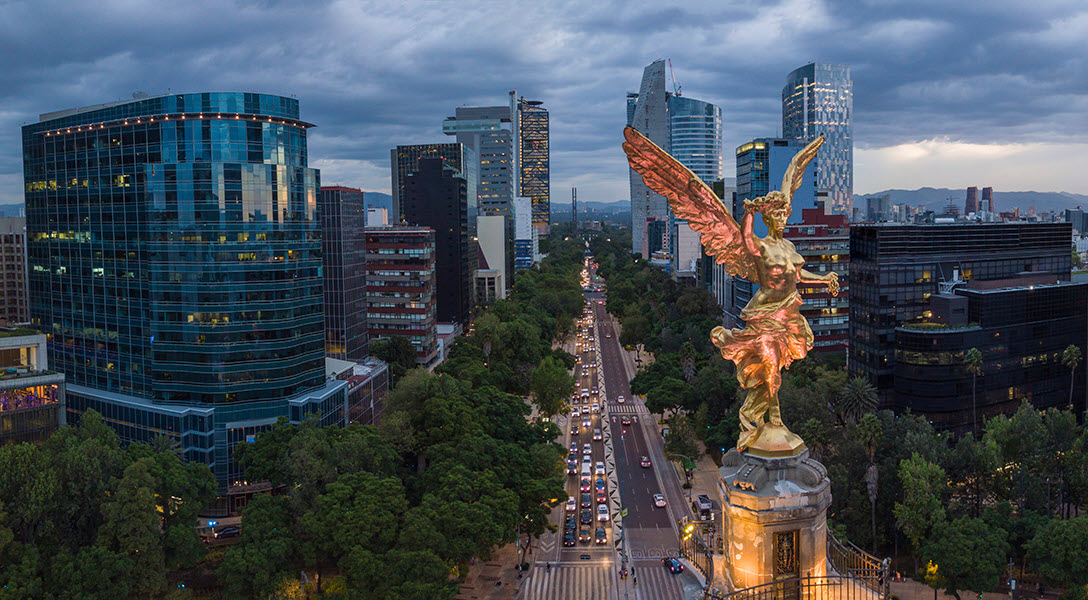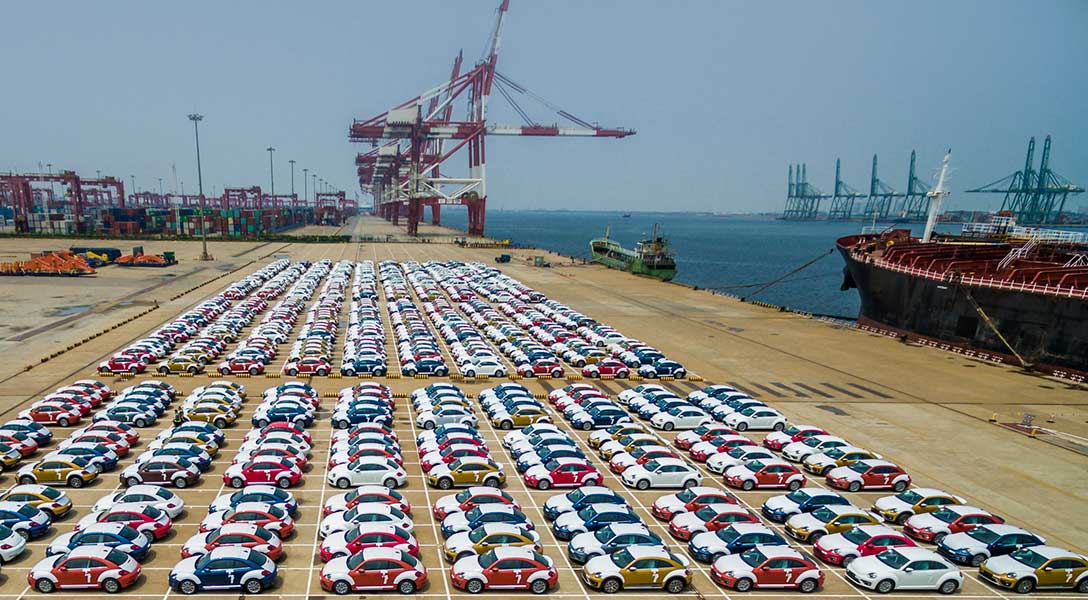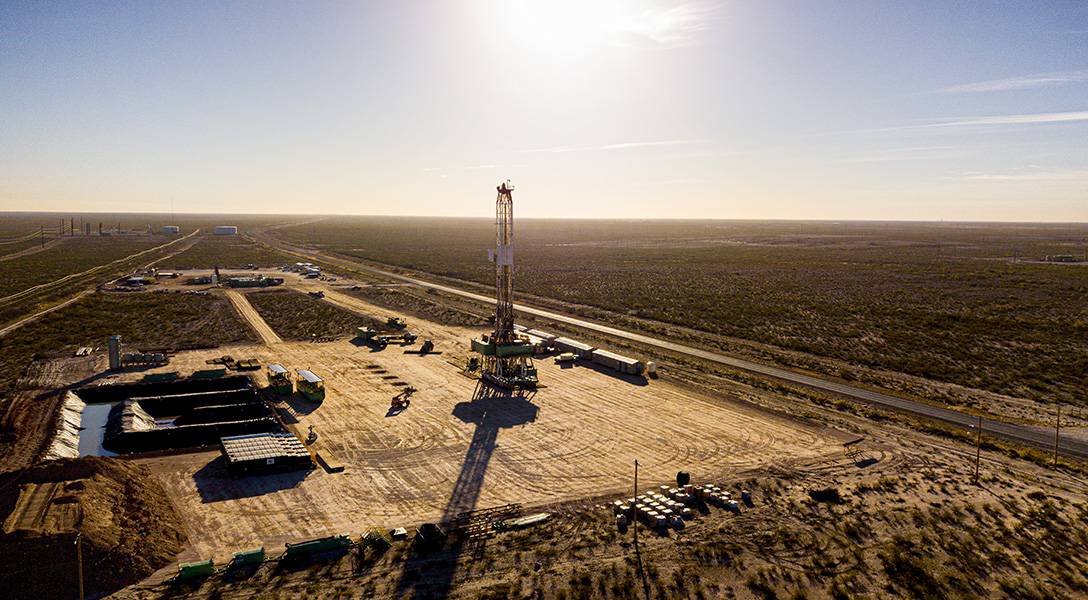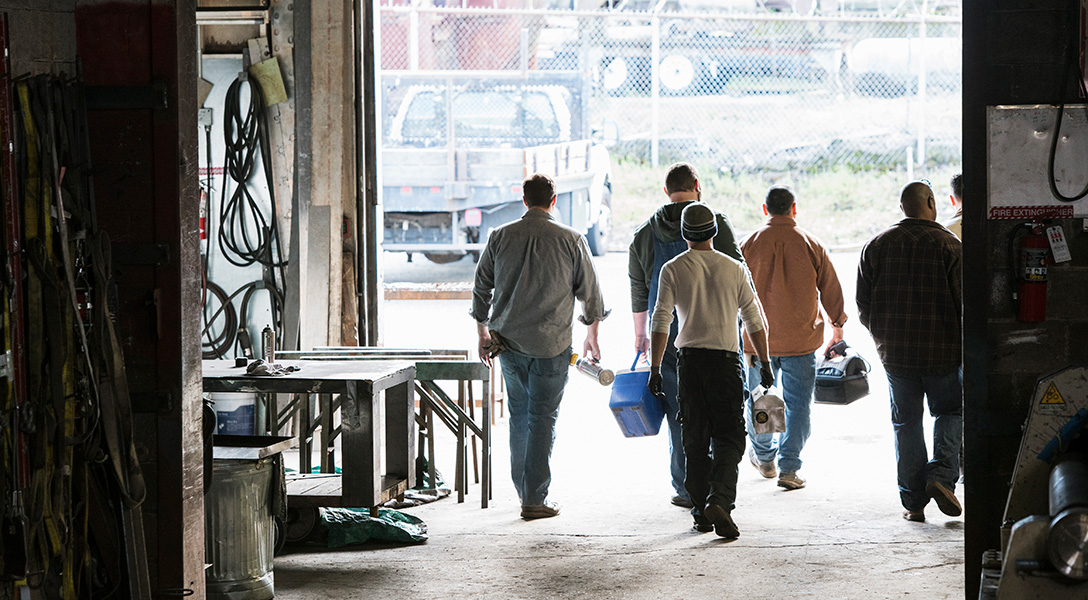
Cross-border manufacturing rises from pandemic lows
Q. Why do we call it cross-border manufacturing?
It is an industry mainly located along the U.S.–Mexico border, making easy the logistics for international trade. All raw materials get to Mexico on a temporary basis and then are used in the manufacturing process and exported back to the U.S. Since Texas borders several Mexican states, it is the main intermediary for U.S.–Mexico manufacturing trade.
Ciudad Juárez is particularly important because it was here where the maquiladora model was born back in the 1960s, and since then it has been the economic backbone of the border region.
Some of our plants include high-tech robotics; some have automated processes with a good mix of traditional labor and robots.
Ciudad Juárez has 320 plants employing 330,000 workers. About 60 percent of all maquiladora jobs in the state of Chihuahua are in Ciudad Juárez. Originally, maquiladora plants were in industrial parks close to international border crossings, but currently they are all over the city.
Q. How do maquilas figure into what U.S. consumers see in the marketplace?
Our main maquiladora industry is the automotive sector. It represents 38 percent of employment in first quarter 2022. We manufacture all kinds of auto-related products, such as seat covers, seat belts, battery cables and wiring harnesses. So, practically all cars U.S. consumers own have a component made in Ciudad Juárez. We also manufacture top-of-the-line all-terrain vehicles (ATVs), refrigerators, washing machines, medical surgical devices and even candies. The popular Brach’s candies are made here.
Q. How have goods changed in the past 20 years?
What we produce now is completely different from what we made 50 years ago. Our manufacturing processes have also evolved with new technologies. For example, some of our plants include high-tech robotics; some have automated processes with a good mix of traditional labor and robots.
We are even adopting the technology needed to supply electric vehicle production. We also have plants that manufacture for Apple, including the iPhone, the MacBook and AirPods. We are manufacturing the electronic products that have become essential. The [maquiladora] industry has evolved at the pace required by the companies and markets we serve. Nevertheless, our industry continues to be labor intensive with a good mix of automation and a more skilled labor force.
Q. How has the pandemic affected cross-border manufacturing?
We still have supply-chain issues, mainly in the automotive and electronics sectors. If our clients can’t produce due to supply-chain issues, we don’t get the production orders for the components we manufacture here.
At the beginning of the pandemic—between March and April of 2020—our industry had to close for more than two months. The government mandated the closure of nonessential business, so the only essential industry in town was medical device manufacturing.
Eventually, we negotiated with the government, and industries such as auto and electronics got the essential designation due to increased demand from the U.S. In addition, we had to continue paying 100 percent of the salary to our workforce during the months that we were closed—on top of all fixed costs. Even now, with reduced production orders, our payrolls must remain unchanged.
The main challenge was to keep the workforce safe from COVID-19. We had to adjust our manufacturing processes to follow domestic and international safety standards, such as social distancing between workers. When vaccines were available domestically, we, in coordination with local and federal authorities, made sure most of the workforce got vaccinated.
Once we had the vaccination process under control, supply-chain issues arose. Our production orders were significantly reduced. We did not have enough raw materials and components; we did not have truck drivers. Even though the international bridges were open for international trade, we did not have product to send. In fact, we are still dealing with supply-chain issues, although we expect that they could get resolved by mid-2022.
During the worst days of the pandemic—before vaccines were available in Mexico—we collaborated with the Mexico consulate in El Paso, El Paso city government and U.S. Rep. Veronica Escobar to organize a massive vaccination campaign for the industry.
Officials from both sides of the border were amazed how orderly the process was. We vaccinated about 400 people every 30 minutes. We ended up vaccinating 33,000 people between July 6 and July 31. Even though it only represented 10 percent of our labor force, it helped to buy time until we got vaccines from the Mexican government.
The future for the industry in our region is encouraging. There is a lot of expected future demand for products that will be incorporated into new technologies, such as those for electric vehicles, but it all depends on investment decisions that must take place now in order to produce in 2023 and 2024. However, it is hard to plan under the current [January 2022] COVID-19 situation.
Q. What measures is the industry taking to keep up with U.S. demand two years into the pandemic?
It has been very complicated; we are monitoring our orders almost by the minute because such orders can change several times during the day. We are efficiently utilizing all that we have available such as labor, components/raw materials [and] financing and always looking for additional business around the world. We are always monitoring current economic conditions in the U.S. because as soon as there is an increase in demand, we will see our production orders growing.
Something we have learned during the pandemic is that we do not depend 100 percent on the U.S. market. We have learned to cope with reduced demand from our principal client, and we have diversified our business at the same time.
Q. As the U.S. talks of “reshoring” manufacturing to ease supply-chain issues, is cross-border manufacturing getting more attention?
There is some discussion about how to bring back manufacturing processes to the region in order to make North America more self-sufficient. There are high-level talks looking at ways to manufacture some components in Mexico and in the U.S. that are currently imported from other regions of the world. We are in constant communication with our clients and looking at ways to fix, in the short run, what we have experienced during the pandemic.
Q. How do United States–Mexico–Canada Agreement (USMCA) trade rules challenge collaborative arrangements?
Before the USMCA was enacted [July 1, 2020], we were taken into consideration and our concerns noted. In theory, the majority of our demands were included in the negotiations. Several of the new requirements—such as the new rules of origin—will take place gradually, giving us time to adjust. So far, it is really hard to measure the effects of USMCA on our bottom line given the pandemic.
Hopefully, once the pandemic is over, we will have time to assess how the USMCA will affect our business and how we could find ways to minimize the impacts, always working closely with our clients to keep our cross-border manufacturing system well-oiled.
Q. Are recent Mexican domestic policies, such as minimum-wage increases, affecting the maquiladora industry?
In every new administration, there are new laws with which to comply, and this [Andrés Manuel López Obrador] administration is no exception. We are kind of used to it. So, what we do every time is inform the new government how new laws would impact our business.
We were not significantly impacted by the new minimum-wage law requiring increases of more than 50 percent in 2019 because we were already paying more than two times the minimum wage. We doubled the minimum wage to the very few workers who were making only minimum wage, and we had to adjust our payroll salary ranges.
We also had to inform our workers that the mandatory wage increases were for minimum-wage earners only, not for all employees. However, subsequent minimum-wage increases in 2020 (5 percent), 2021 (15 percent) and 2022 (22 percent) are impacting the industry.
We are negotiating with the federal government regarding strategies to limit wage increases in the succeeding years given that, in the border region, we already pay what the new mandatory increases are trying to reach.
Q. Is the region ready to go to the next phase of manufacturing, one that may require advanced materials and software development?
We have great expectations for the future regarding new technologies and manufacturing processes for electric vehicles. Practically all automotive plants in our region are already working on different projects with their respective clients.
Such manufacturing projects could materialize in 2023 or 2024. For example, we are working on the new wiring systems that the new models will require and assessing what new tools, materials [and] even manufacturing space we may require. We are already including in our budgets today what we may need two years from now despite the hard times we have gone through during the pandemic.
Southwest Economy is published quarterly by the Federal Reserve Bank of Dallas. The views expressed are those of the authors and should not be attributed to the Federal Reserve Bank of Dallas or the Federal Reserve System.
Articles may be reprinted on the condition that the source is credited to the Federal Reserve Bank of Dallas.
Full publication is available online: www.dallasfed.org/research/swe/2022/swe2201.




